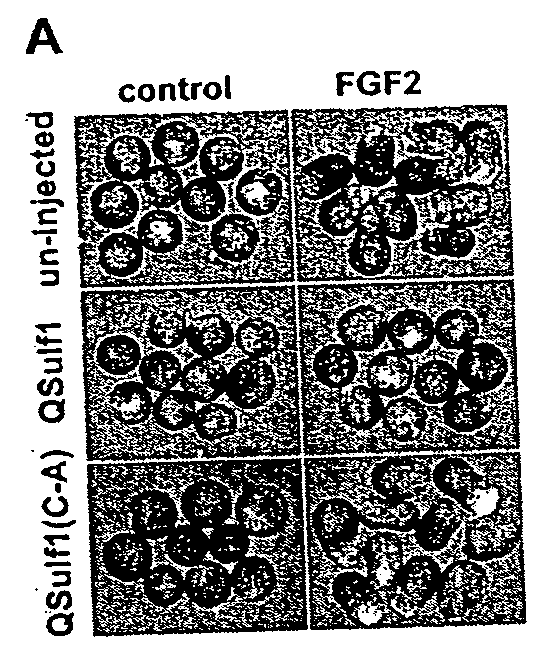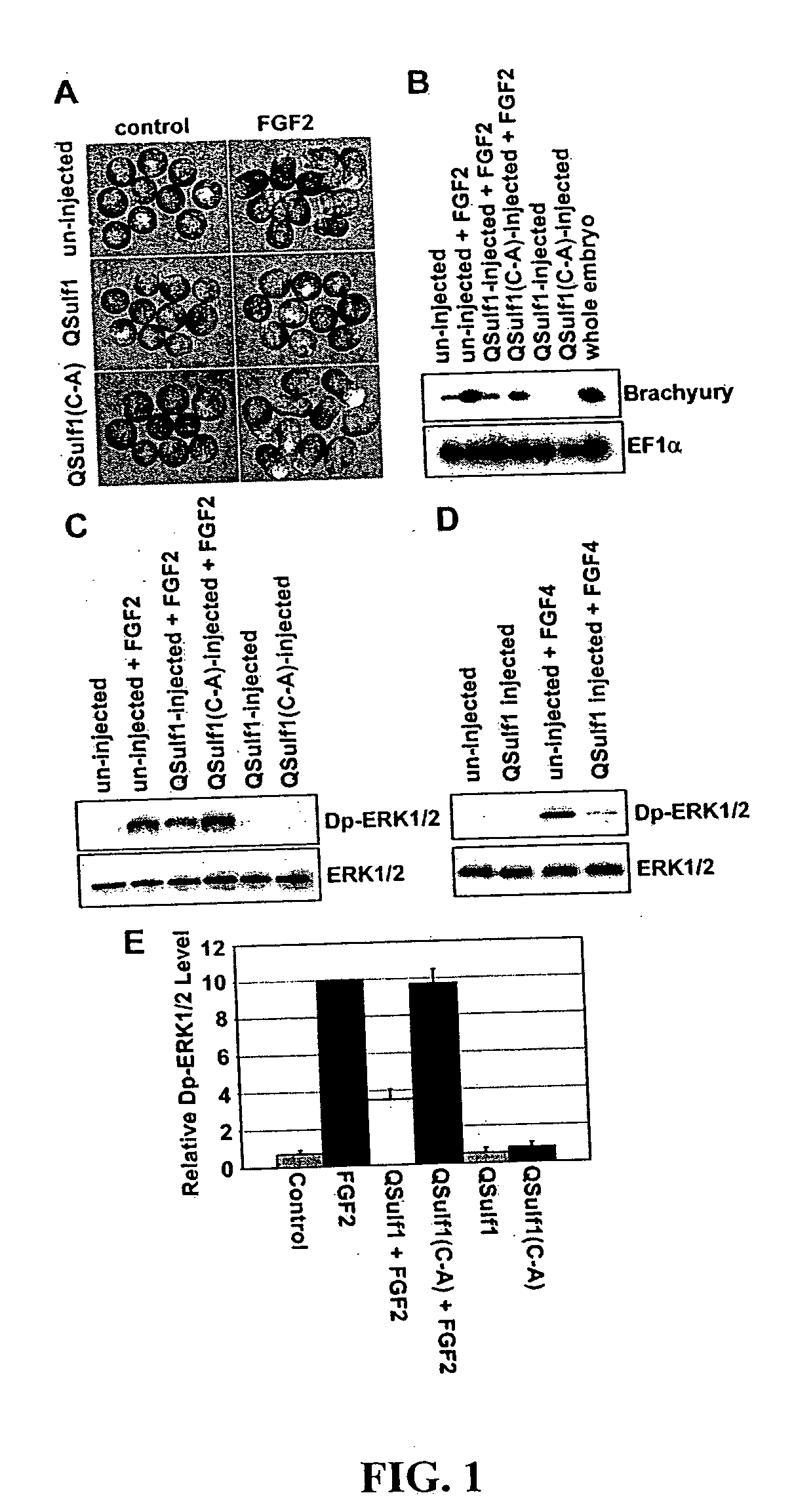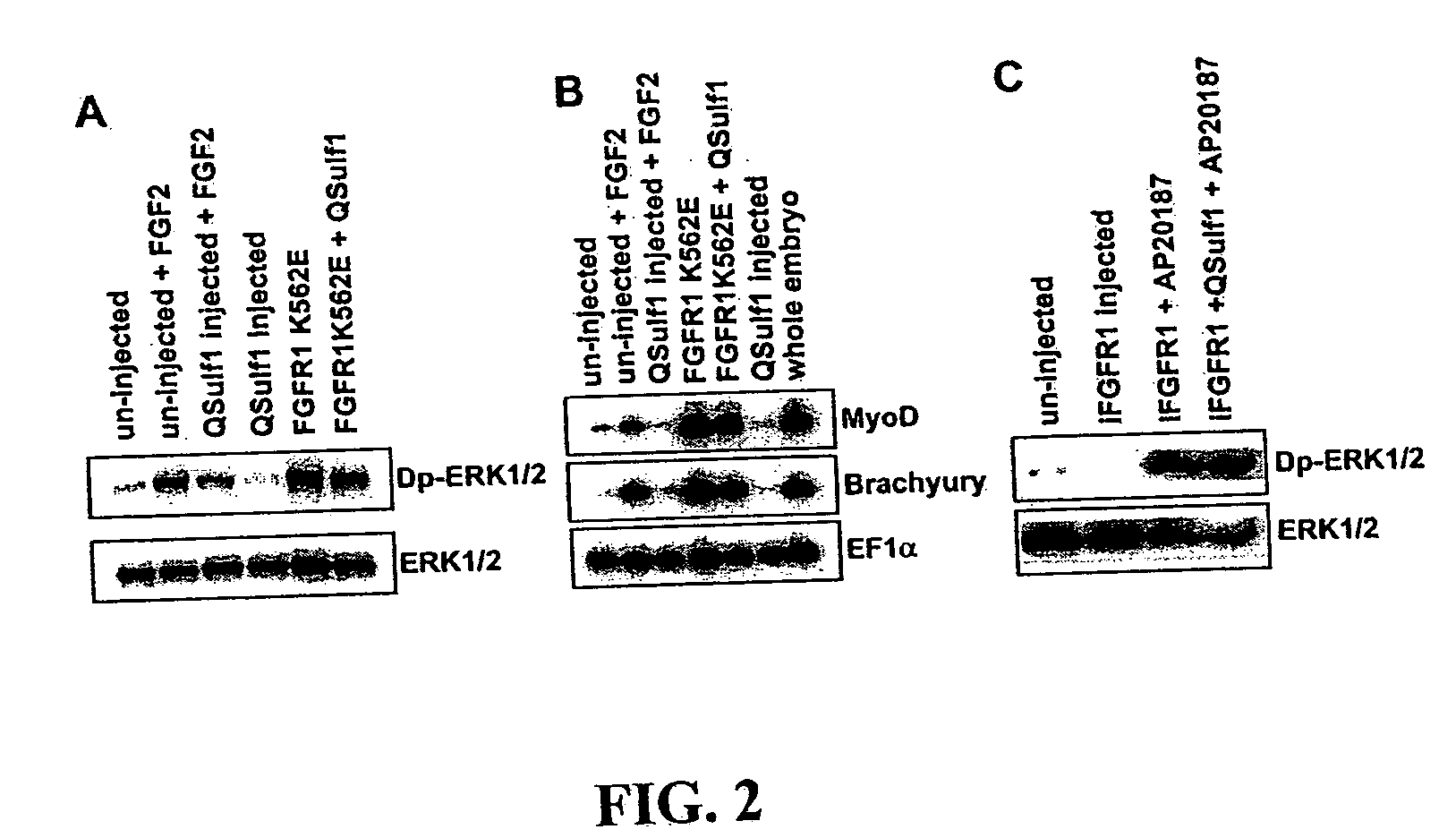Inhibition of FGF signaling
- Summary
- Abstract
- Description
- Claims
- Application Information
AI Technical Summary
Benefits of technology
Problems solved by technology
Method used
Image
Examples
Embodiment Construction
[0018] The present invention relates, in one aspect, to methods for inhibiting FGF signaling in an FGF-responsive cell. More specifically, the present invention relates to methods for inhibiting FGF signaling by exploiting the enzymatic activity of a previously identified heparan sulfate 6-O endosulfatase, Sulf1. In the present invention, Sulf1 activity is used to enzymatically modify the sulfation of cell surface or exogenous glycosaminoglycan ligands. Desulfation of cell surface and / or exogenously added glycosaminoglycans prevents FGF-2 and FGF-4 binding to FGFR1 and, in turn, inhibits FGFR1 activation in desired cells.
[0019] The present invention is based on the discovery that Sulf1 enzymatic activity can suppress FGF signaling in an FGF-responsive cell. As disclosed in the Exemplification section which follows, suppression with respect to FGF2 and FGF4 signaling through FGF1 has been demonstrated. It is an object of the present invention that Sulf1 suppress FGF signaling by mod...
PUM
| Property | Measurement | Unit |
|---|---|---|
| Time | aaaaa | aaaaa |
| Responsivity | aaaaa | aaaaa |
| Cell growth | aaaaa | aaaaa |
Abstract
Description
Claims
Application Information
 Login to View More
Login to View More - R&D
- Intellectual Property
- Life Sciences
- Materials
- Tech Scout
- Unparalleled Data Quality
- Higher Quality Content
- 60% Fewer Hallucinations
Browse by: Latest US Patents, China's latest patents, Technical Efficacy Thesaurus, Application Domain, Technology Topic, Popular Technical Reports.
© 2025 PatSnap. All rights reserved.Legal|Privacy policy|Modern Slavery Act Transparency Statement|Sitemap|About US| Contact US: help@patsnap.com



